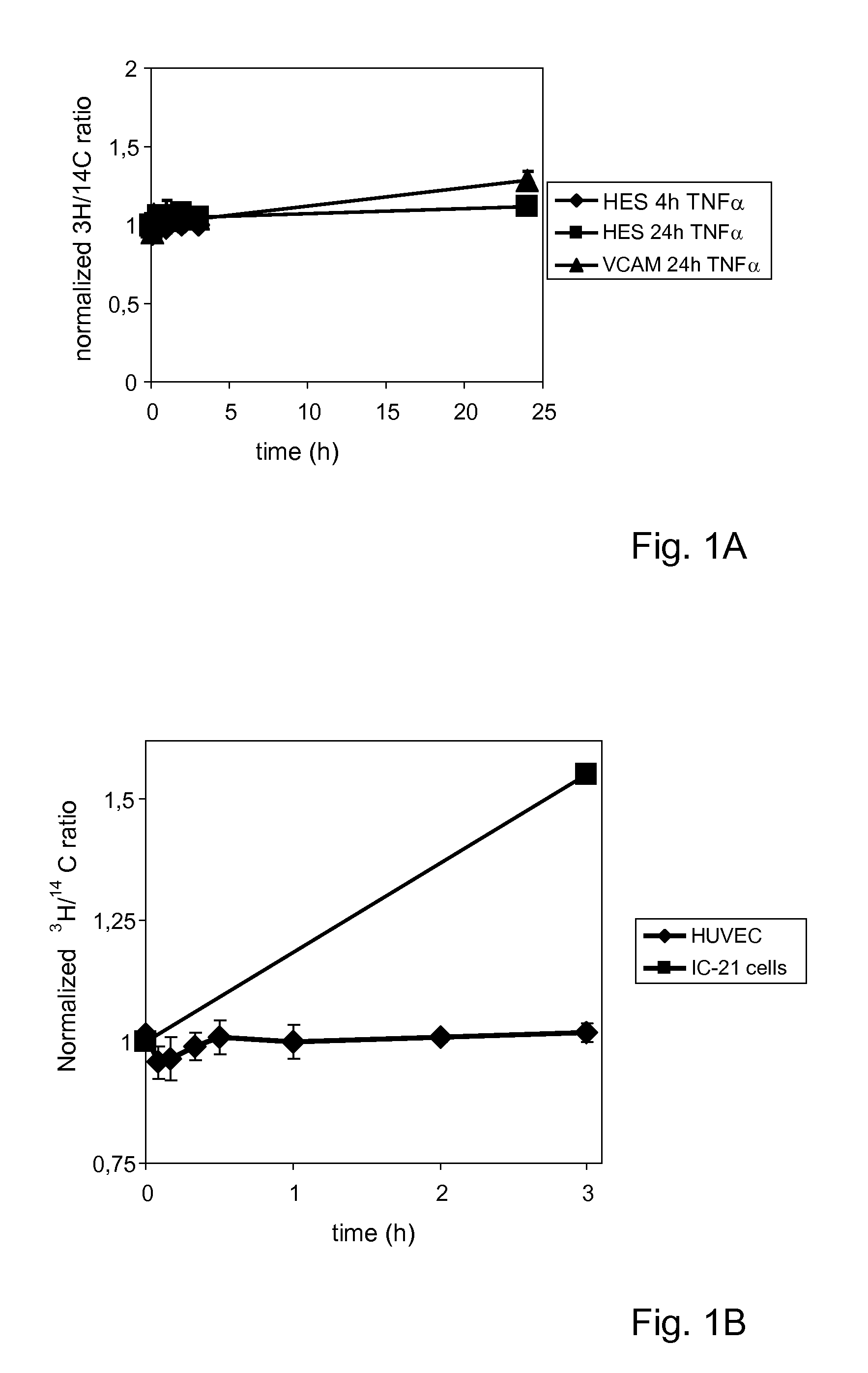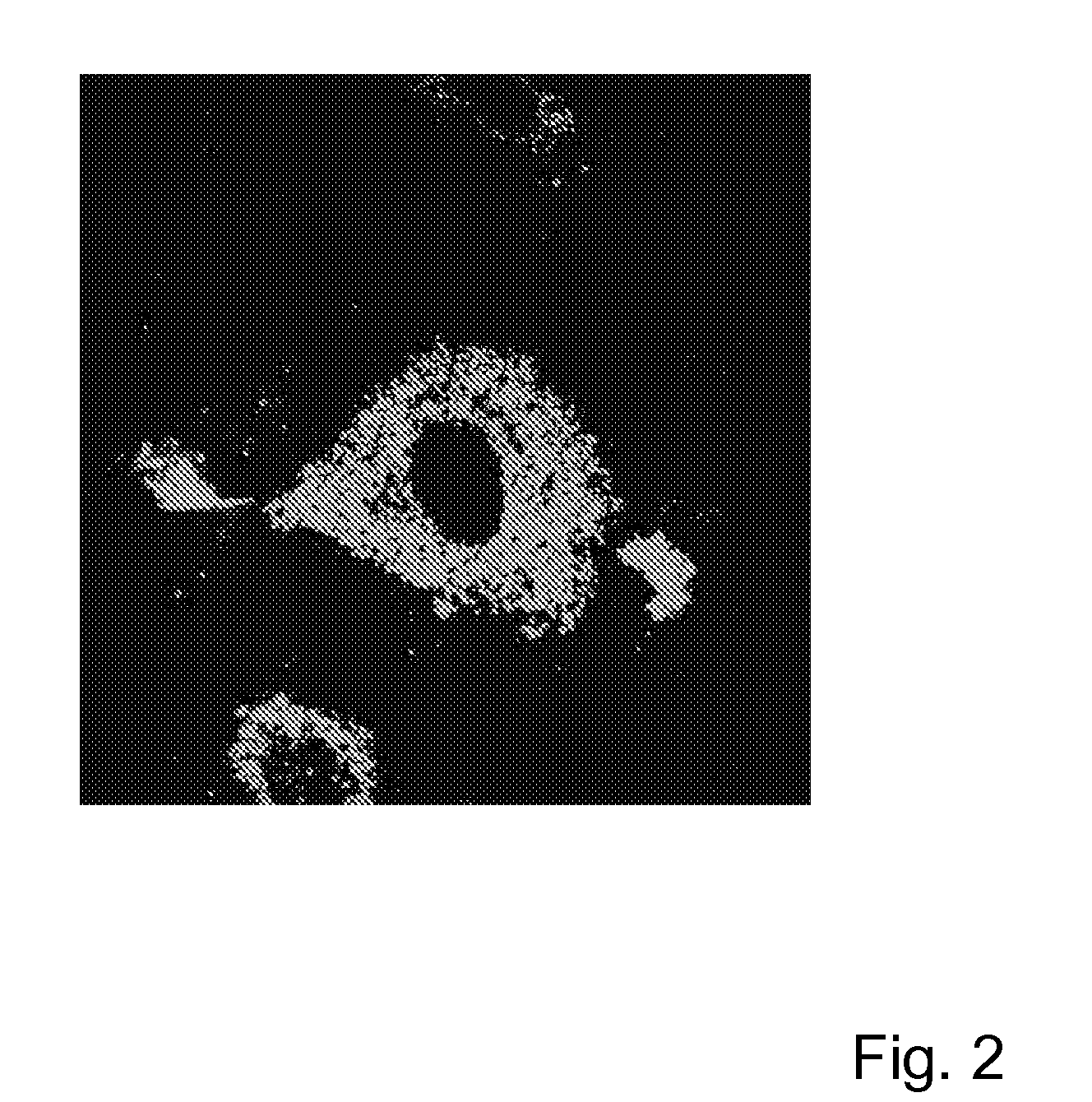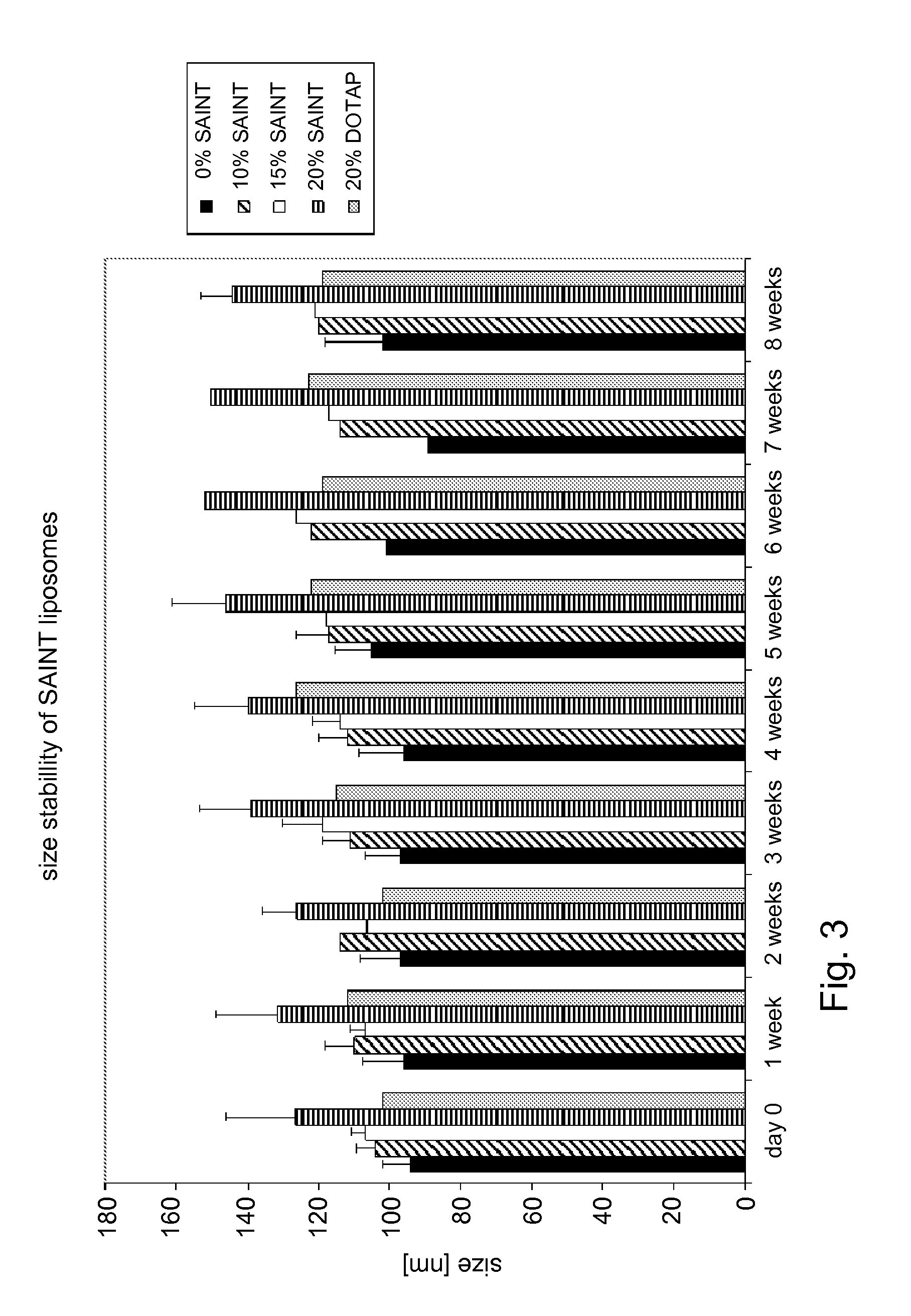Liposomes and Uses Thereof
- Summary
- Abstract
- Description
- Claims
- Application Information
AI Technical Summary
Benefits of technology
Problems solved by technology
Method used
Image
Examples
Embodiment Construction
Abbreviations Used
[0063]TNFα, tumor necrosis factor α
VCAM-1, vascular cell adhesion molecule 1
HUVEC, human umbilical vein endothelial cells
DiI, 1,1′-dioctadecyl-3,3,3′,3′-tetramethylindocarbocyanine perchlorate
SAINT, N-methyl-4-alkylpyridium chloride; SATA, (N-succinimidyl-5-acetylthioacetate)
DOTAP, N-[1-(2,3-Dioleoyloxy)]-N,N,N-trimethylammonium propane
Liposome Preparation.
[0064]Liposomes were prepared as follows. Lipids from stock solutions of 1-Palmitoyl-2-oleoyl-sn-glycero-3-phosphocholine (POPC), cholesterol (Chol), 2-distearoyl-sn-glycero-3-phosphoethanolamine-N-[methoxy(polyethylene glycol)-2000] (DSPE-PEG) and 1,2-distearoyl-sn-glycero-3-phosphoethanolamine-N-[methoxy(polyethylene glycol)-2000]-maleimide (DSPE-PEG-Mal) in chloroform:methanol (9:1, by volume), were mixed in a molar ratio of 55:40:4:1, dried under reduced nitrogen pressure, dissolved in cyclohexane and lyophilized. Where indicated, 1-methyl-4-(cis-9-dioleyl)methyl-pyridinium-chloride (SAINT-18) was added to th...
PUM
| Property | Measurement | Unit |
|---|---|---|
| Diameter | aaaaa | aaaaa |
| Diameter | aaaaa | aaaaa |
| Amphiphilic | aaaaa | aaaaa |
Abstract
Description
Claims
Application Information
 Login to View More
Login to View More - R&D
- Intellectual Property
- Life Sciences
- Materials
- Tech Scout
- Unparalleled Data Quality
- Higher Quality Content
- 60% Fewer Hallucinations
Browse by: Latest US Patents, China's latest patents, Technical Efficacy Thesaurus, Application Domain, Technology Topic, Popular Technical Reports.
© 2025 PatSnap. All rights reserved.Legal|Privacy policy|Modern Slavery Act Transparency Statement|Sitemap|About US| Contact US: help@patsnap.com



